The Harami Pattern
Learn about the Harami Candlestick Pattern – a candlestick pattern that helps identify market trend reversals. Guide on how to trade, and its pros and cons.
The Harami Candlestick Pattern is one of the key candlestick patterns in technical analysis, helping investors identify potential trend reversals in the market. This pattern is easy to recognize and effective, offering an advantage to those who master its usage. In this article, we will explore the structure, trading strategies, and the pros and cons of the Harami candlestick pattern, enabling you to optimize your investment strategy.
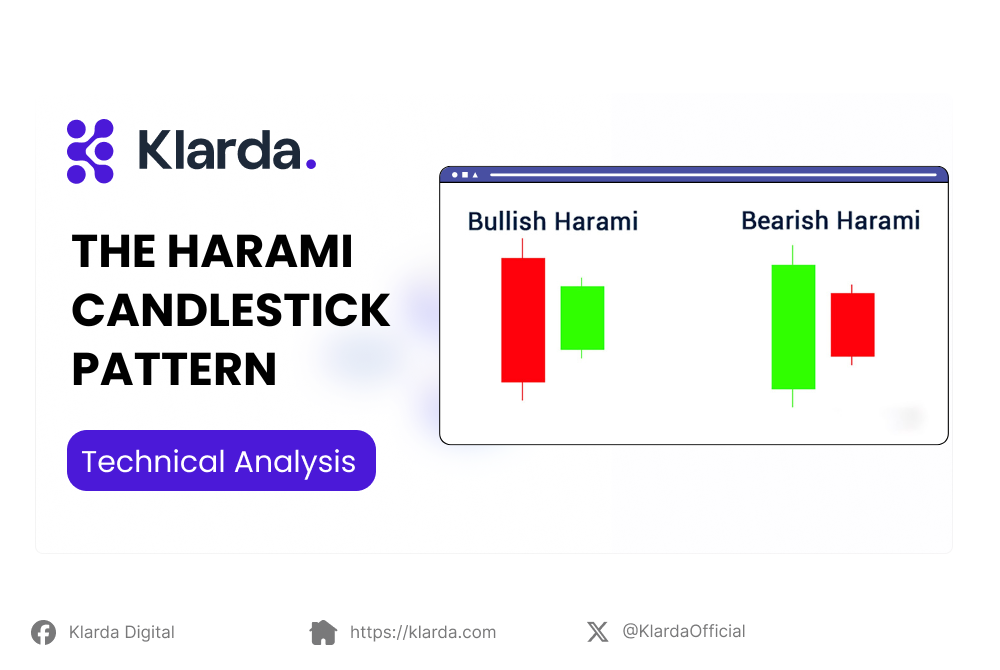
KEY TAKEAWAYS
- The Harami Candlestick Pattern is a candlestick pattern that helps identify potential trend reversals in the market.
- The structure of the Harami involves a small candlestick completely within the body of the previous candlestick.
- How to trade with Harami: Determine appropriate entry and exit points based on this pattern.
- Pros: Easy to recognize, suitable for beginners.
- Cons: Effectiveness may diminish if not combined with other signals.
WHAT IS THE HARAMI CANDLESTICK PATTERN ?
The Harami candlestick pattern, often called the "pregnant woman" pattern, consists of two candles: the "mother," which engulfs the smaller "child." It’s used to predict future market movements and is seen as a reversal pattern, signaling a potential trend change. Traders use the Bullish Harami to indicate a possible price increase and the Bearish Harami to suggest a potential decline.
- Bullish Harami: A Bullish Harami consists of two candles: a long red candle followed by a smaller green one. It suggests a potential continuation or short-term reversal of an uptrend. The signal is stronger when the second candle is smaller, and even more reliable if its body is entirely within the first candle's range.
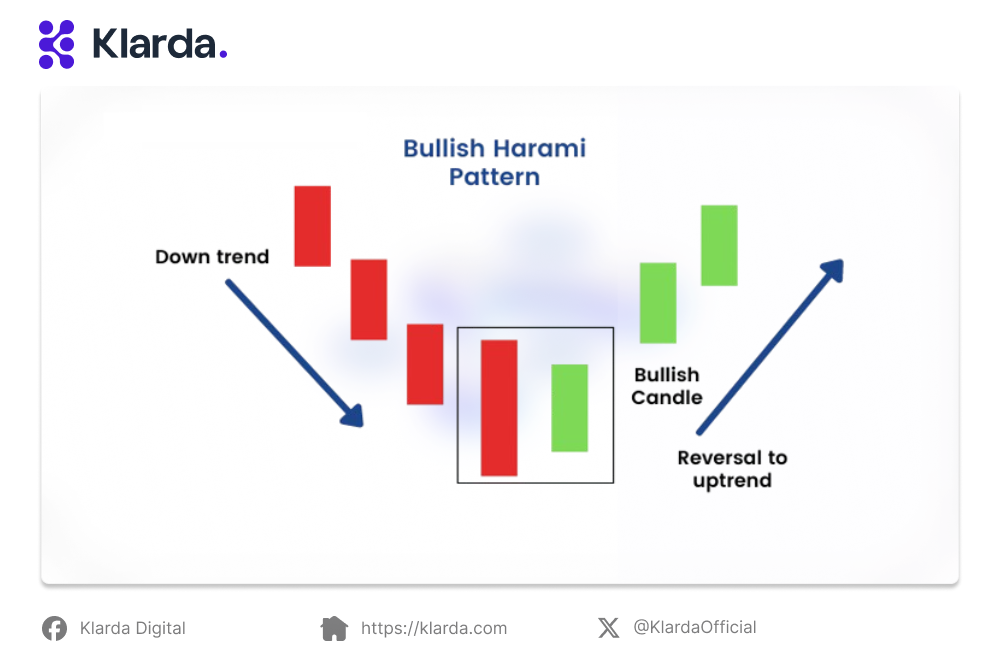
- Bearish Harami: A Bearish Harami is a reversal pattern indicating a possible shift from an uptrend to a downtrend. It features two candles: a long green candle followed by a shorter red one, with the red candle's body inside the previous green candle.
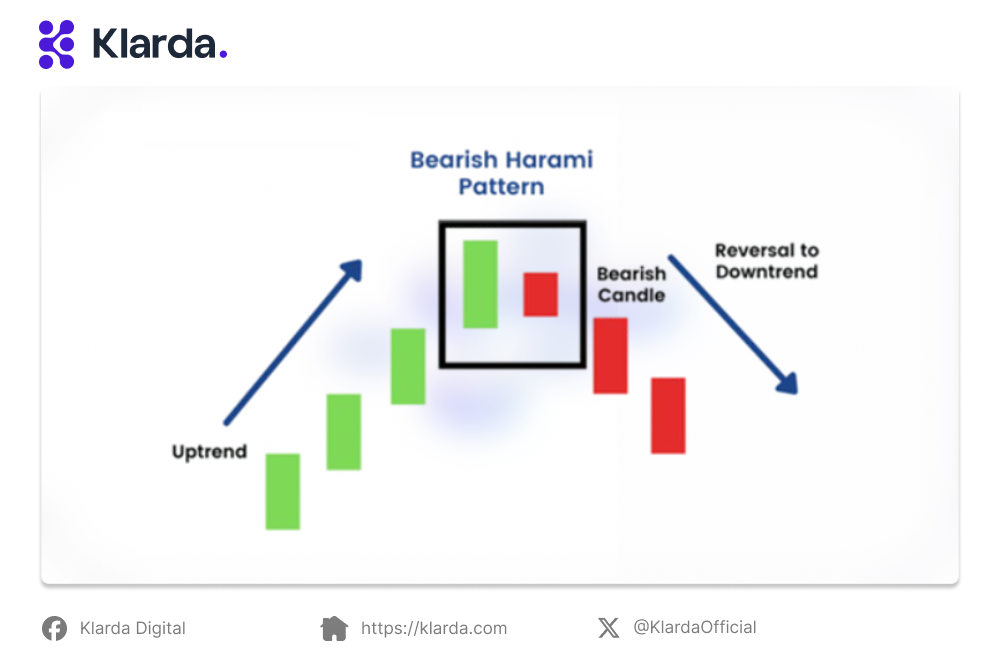
HOW IS THE HARAMI CANDLESTICK PATTERN STRUCTURED?
The Harami candlestick pattern offers strong reversal signals for investors, but recognizing it is key to using it effectively. Here are its main characteristics:
- Harami is always a two-candle pattern that can appear in both uptrends and downtrends.
- The first candle usually has a long body and can be either bullish or bearish.
- The second candle, which confirms the reversal, should not exceed 25% of the first candle's size.
- The color of the second candle (green or red) is not significant.
- If the second candle is completely within the first, it creates a strong reversal signal. In a Bearish Harami, if the second candle is below the body of the first, it may indicate a sideways market.
- The open, close, high, and low of the second candle should be within the range of the first candle for a strong reversal signal.
- The smaller the second candle, especially if it resembles a Doji, the higher the likelihood of a reversal.
HOW TO TRADE THE HARAMI CANDLESTICK PATTERN?
To trade the Harami Candlestick Pattern effectively, it's important to understand its key characteristics and market implications. The second candle’s small body within the first candle’s range indicates market indecision, as neither buyers nor sellers dominate.
In a Bullish Harami, the market has been in a downtrend, and the appearance of this pattern suggests that buyers are starting to step in. Conversely, in a Bearish Harami, a prior uptrend may reverse as sellers begin to take control.
When a Harami pattern appears, it signals a potential market reversal. Traders can use this pattern to identify entry and exit points by watching for the market’s inability to break above the high of a Bearish Harami or below the low of a Bullish Harami, indicating the market's readiness to change direction.
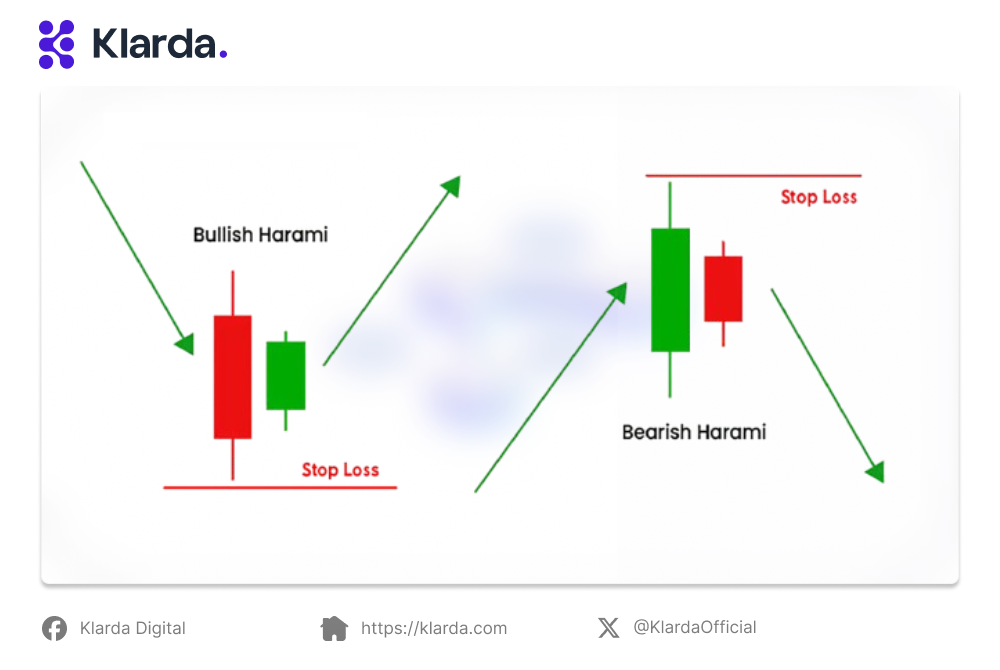
PROS AND CONS OF THE HARAMI CANDLESTICK PATTERN?
Pros:
- Simplicity: The Harami pattern is simple and easy to understand, making it particularly suitable for beginners. By observing the shape and color of the two candles, investors can predict market trends.
- Versatility: The Harami pattern can signal both bullish and bearish trends, providing early warnings of potential market changes.
Cons:
- Unreliable Signals: While useful, the Harami pattern's signals are not always reliable. Often, it's necessary to wait for an additional candle to confirm the market reversal.
- Not Ideal for Short-Term Trading: The Harami pattern is typically not suitable for short-term or intraday trading, as its signals may not be strong enough to predict short-term movements.
- Requires Additional Tools: For more accurate and safe signals, the Harami pattern should be used in conjunction with other technical tools and indicators in market analysis.
Klarda App is a powerful tool that enables investors to quickly identify key candlestick patterns like the Harami. With its user-friendly interface and advanced analytical features, Klarda not only makes recognizing the Harami pattern easier but also provides effective tools to support your trading decisions. Let Klarda App be your companion in the investment journey, helping you make smarter and more accurate decisions based on robust technical analysis.
The Klarda App has two versions: a web browser version and a mobile app version.
- Web browser version: https://klarda.com/
- Mobile web browser version: https://m/klarda/com/
- Mobile app version for iOS: https://apps.apple.com/ua/app/klarda-crypto-and-portfolio/id6471593752
- Mobile app version for Android: https://play.google.com/store/apps/details?id=com.klarda.app
Note: Both versions have the above features.
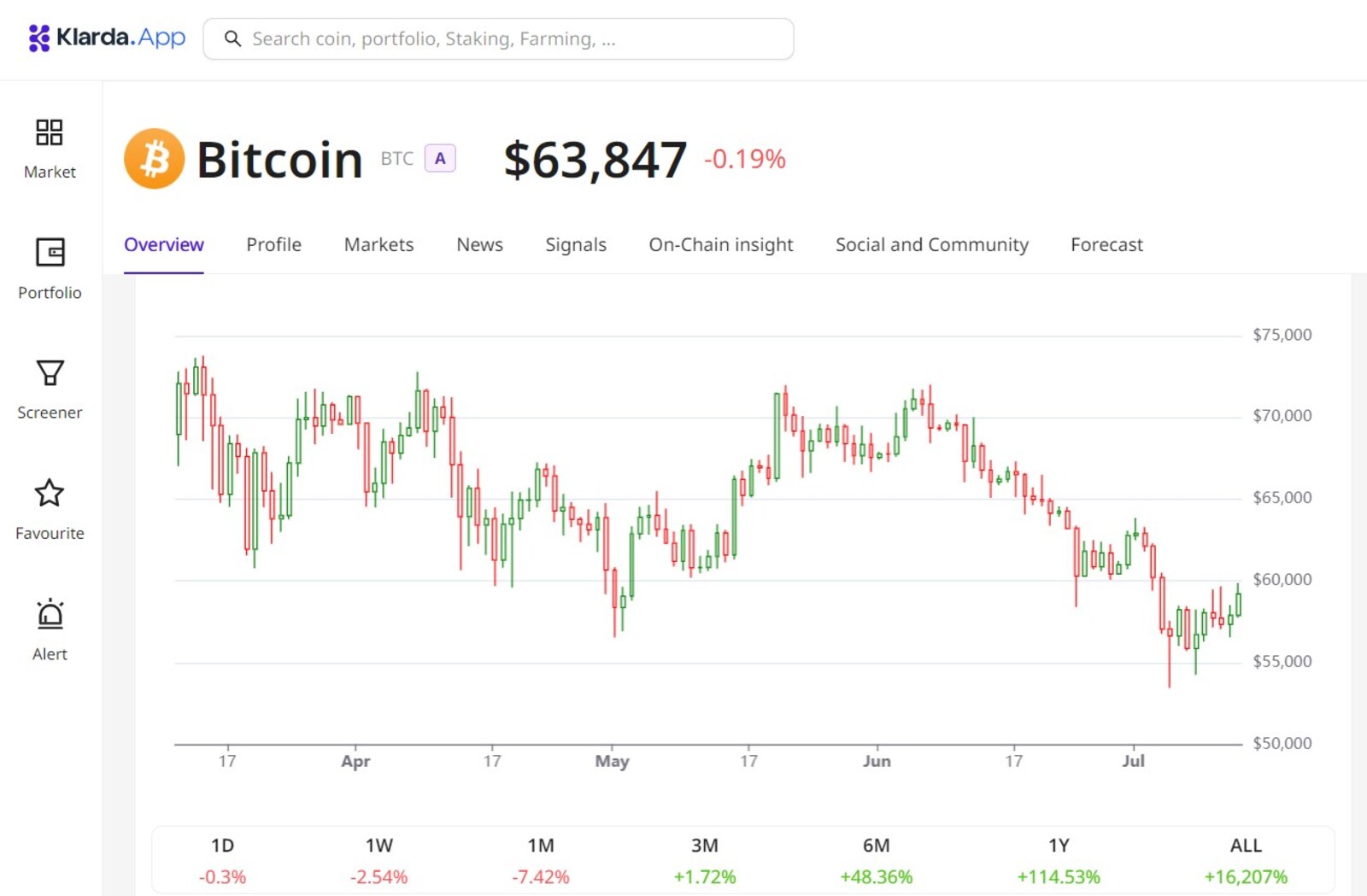
The Harami Candlestick Pattern, with its simplicity in structure yet powerful effectiveness, is an essential tool in any investor’s technical analysis arsenal. Whether you are a beginner or an experienced trader, understanding this pattern will help you make smarter trading decisions. Always remember, no pattern is perfect, so combining the Harami with other signals will yield the best results.
Updated 8 months ago